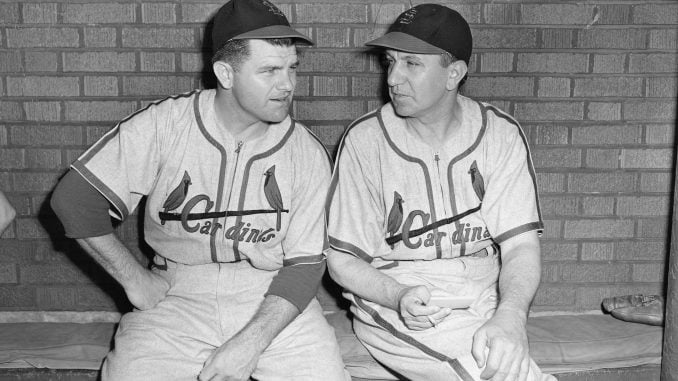
North State Journal’s 100 in 100 series will showcase the best athlete from each of North Carolina’s 100 counties. From Alamance to Yancey, each county will feature one athlete who stands above the rest. Some will be obvious choices, others controversial, but all of our choices are worthy of being recognized for their accomplishments — from the diamond and gridiron to racing ovals and the squared circle. You can see all the profiles as they’re unveiled here.

Davidson County
Max Lanier
Lanier was one of the most significant baseball players of his era, and not just because he won 108 games over nine seasons, played in two All-Star Games, once led the National League in earned run average and helped pitch the St. Louis Cardinals to a championship. Rather, it’s because he was one of the first to challenge the major leagues’ “reserve clause” in 1948.
It’s not something he intentionally set out to do, like fellow Cardinal Curt Flood 25 years later. Lanier and several others were simply unhappy with the offers they were given by team management. With free agency not yet allowed, they decided to jump to the Mexican League for double what they were making in St. Louis.

That turned out to be a mistake because of broken financial promises and poor playing conditions. But when Lanier and the others tried to return to the Cardinals after two years away, they were barred from playing in the majors by commissioner Happy Chandler. In response, the players sued MLB, claiming that the “reserve clause” was a violation of U.S. antitrust laws. Worried that it might lose the case, MLB relented and Lanier was reinstated in 1949.
Although he earned his success on the diamond as a left-handed pitcher, Lanier was a natural right-hander who taught himself to throw as a southpaw after breaking his arm at the age of 12. A multisport star at Denton High, he signed with the Cardinals in 1937.
Like many athletes at the time, he was inducted into the Army during World War II, but to his good fortune, he was never called to active duty. He enjoyed his two best seasons during that time, posting a lead-leading 1.90 ERA while going 15-7 in 1943, then winning 17 games the following year while beating the St. Louis Browns in the deciding game of the World Series.



